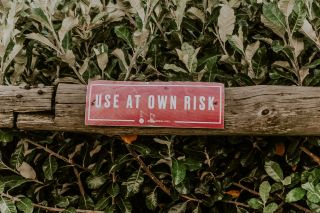Creativity
5 Strategies to Realize Your Creative Potential
To combat creative anxiety, we need ways to help us build creativity.
Posted January 29, 2023 Reviewed by Jessica Schrader
Key points
- Learning strategies that boost creative thinking and action can alleviate creative anxiety.
- It helps to come up with multiple ideas. Beware that the first ones are not the most creative.
- Getting skilled at managing emotions supports creativity by enabling us to maintain passion for our interests and persist in spite of obstacles.
There are many reasons to boost our creativity, from enhancing our well-being to building career skills. Yet, creativity is, by definition, full of uncertainties—whether or not we can come up with ideas and make them happen, and how they might be received—and uncertainty breeds anxiety. To effectively face this creative anxiety, we need to know what to expect and also what actions and strategies to use to help us build creativity.

The first post in this series discussed what we should know to build our creative potential. In this post, I discuss lessons on what we can do.
Be willing to tolerate risks
Creativity is risky. We face the risk of not being able to do what a creative task or project asks of us. We face a risk of negative reception. Will teachers highly grade students’ work? Will bosses approve projects or allocate resources to creative projects? Will literary, music, or other critics review our creations favorably? Will audiences love our creations, ignore them, or hate them?
Creativity requires a willingness to take intellectual risks (e.g., the risk of trying to learn new skills if they are necessary) and social or reputational risks (e.g., pursuing unconventional or unpopular ideas). However, creative individuals are better described as tolerating risks than seeking them. They are not taking risks for the thrill of it, but rather to achieve something specific. To boost creativity, we need to take calculated risks, risks that balance goals that are doable, but also depart from conventional approaches to problems.
Be open to new experiences
The No. 1 question when I introduce myself as a creativity scholar is how to come up with new and original ideas. The great Leonardo da Vinci described it well: “By looking attentively at old and smeared walls, or stones and veined marble of various colors, you may fancy that you see in them several compositions, landscapes, battles, figures in quick motion, strange countenances, and dresses, with an infinity of other objects. By these confused lines the inventive genius is excited to new exertions.”
What Leonardo described is part of what psychologists call openness to experience. People differ on how naturally it comes to them to look at the world with curiosity and wonder, enjoy flights of fancy and imagination, look for connections between seemingly different ideas or topics, and seek diversity of experiences (as opposed to desiring the comfort of routine). Although there is a substantial genetic component to our tendency to be more or less open to new experiences, it can also be boosted by our actions and educational experiences that make our world bigger.
When we take our head off from a tightly scheduled life and create space for daydreaming or following down rabbit holes of our curiosity, we are likely to make connections between ideas, ask new questions, and be more original thinkers. To do this, we need to reject (at least some of) the cultural pressure for full productivity at all times and give ourselves the permission to explore, with or without an immediate goal in mind. New and original ideas will become more likely.
Think of multiple ideas
Chances are, most of us have been part of brainstorming sessions. Usually, these sessions start with a prompt about a problem or a task, and participants (e.g., members of a work team) are asked to come up with ideas. Most often, people are given just a few minutes for this task. The assumption is that ideas come quickly (three minutes!). It is thus not surprising that people believe first ideas are best and the more ideas they generate, the quality falls off.
The truth is the exact opposite. When we are asked to “get ready, go!” in a brainstorming session, we want to start with ideas quickly and without any uncomfortable delay. Unsurprisingly, first ideas tend to be obvious. They are based on strong associations in our minds which were made by seeing connections between objects and ideas many times before. The longer we spend thinking of new ideas, the more creative they get. We run out of obvious associations and those more difficult and more original came come through.
Take, for example, common creativity exercises used in both research and training. People are asked to think of different uses for common everyday objects, such as a tin can, paperclip, or a brick. The first ideas are common uses—brick can be used as building material (e.g., to build walls or garden paths) or as a heavy object (e.g., a door stop or a weapon). Once we run out of those ideas, if we accept the uncomfortable “not sure I can come up with anything else” and continue thinking even if ideas are not flowing seamlessly, we are likely to generate more ideas and more original ones (e.g., grind a brick to get colorful sand for an art project). Sometimes the best way to deal with creative anxiety is not to try to escape it.
Get better at managing emotions
Let’s face it, creativity is difficult. We might start enthusiastic and energized, but develop doubts. Almost inevitably, we will encounter frustrations. We might get stressed or overwhelmed by deadlines and evaluations hanging over our heads. Or be confused about what to do and anxious when we don’t know what to do next. If left unmanaged, these emotions can take over and kill creativity.
The good news is that we can learn how to use strategies to manage our emotions effectively. Skill building takes time and practice and it does not come without setbacks. But it is possible. In a Yale University study of educators working to develop innovative teaching approaches in their schools, one participant described how they were dealing with emotions when the going got tough, “I use a lot of self-talk. I also talk out certain frustrations with close friends. I take time to breathe and change my location so that I can re-frame my perspective when I need to.”
This example shows two important things about managing emotions. First, there are some strategies that tend to be helpful, including seeing support from trusted others, considering different perspectives on the events that triggered feelings (e.g., are there silver linings, lessons from the situation), and mindful breathing. And second, it is crucial to have multiple strategies in our toolkit. If one strategy does not work, we can have other options, increasing our confidence we can manage our feelings.
In my lab, we examined how the ability to effectively manage emotion helps creativity. We started by assessing creative potential—people’s desire to be original, their tendency to be curious and imaginative and have unconventional ideas. We also asked those who know the study participants best whether they were original and creative. And finally, we administered a test that asked people to solve problems about emotion-filled situations. Those who were recognized as most creative started with creative potential. But even high creative potential without the ability to solve emotion-filled problems was not related to creativity. What the ability to manage emotions did is help to maintain passion for people’s interests and persist in the face of obstacles.
When stuck, reconsider, adjust, and change course
Once we have creative ideas, the challenge of transforming their potential into reality is still ahead of us. Because creating something is by definition new and original, there isn’t a road map we can follow. Any lack of progress (when we want and expect it) or lack of success is going to be anxiety provoking. What do we do?
To make our ideas happen and become tangible products or performances, we will have to adjust our approach and perhaps even restart what we are doing. Sometimes, this even requires the abandonment of our initial ideas. This was the case when Jason Citron and Stan Vishnevsky set out to develop a tablet-based multiplayer game Fates Forever. The game won a bunch of awards, but did not gain many users. The founders realized how difficult it was to communicate with friends while gaming using existing apps and decided to make their in-game chat feature into a stand-alone product. Adjusting the approach meant abandoning the idea of the game the founders loved. And starting on something new. It was uncertain whether the new idea would work, which added to the anxiety and stress of the first plan not working out. But the willingness to learn in the process of creation and readiness to change course made them ultimately successful.
Psychologist Mihalyi Csikszentmihalyi called this process problem findings and considered it the most important part of the creative process. He observed as art students created still-life drawings. All participants were given the same set of objects to choose from. His question was how would the most creative of them choose objects and go about creating the drawings. What he found was that the most creative drawings were made by those artists who spent a lot of time playing with and examining the objects. They felt them and weighed them. They arranged some and then others. They added and subtracted objects.
Creative achievement begs us to live with some level of anxiety. We have to be willing to tolerate some uncertainties and risks if we are going to try something original. It simply cannot be known what will happen with an idea. We need to play with ideas and possibilities longer than it is comfortable. The pressures to perform and produce are real, but without this play, what we produce is less likely to be creative.
References
Bleidorn, W., Hopwood, C. J., & Lucas, R. E. (2018). Life events and personality trait change. Journal of personality, 86(1), 83-96. https://doi.org/10.1111/jopy.12286
Csikszentmihalyi, M. (1988). Motivation and creativity: Toward a synthesis of structural and energistic approaches to cognition. New Ideas in Psychology, 6(2), 159-176. doi:10.1016/0732-118X(88)90001-3
Feist, G. J. (1998). A meta-analysis of personality in scientific and artistic creativity. Personality and Social Psychology Review, 2(4), 290-309. doi:10.1207/s15327957pspr0204_5
Ivcevic, Z., & Brackett, M. (2015). Predicting creativity: Interactive effects of Openness to Experience and Emotion Regulation Ability. Psychology of Aesthetics, Creativity and the Arts, 9, 480-487. https://doi.org/10.1037/a0039826
Ivcevic, Z., & Mayer, J. D. (2009). Mapping dimensions of creativity in the life-space. Creativity
Research Journal, 21(2-3),152-165. doi:10.1080/10400410902855259
Ivcevic, Z., & Nusbaum, E. C. (2017). From having an idea to doing something with it: Self-regulation for creativity. In M. Karwowski & J. C. Kaufman (Eds.), The creative self: How our beliefs, self-efficacy, mindset, and identity impact our creativity (pp. 343-365). San Diego, CA: Academic Press.
Lucas, B. J., & Nordgren, L. F. (2020). The creative cliff illusion. Proceedings of the National Academy of Sciences, 117(33), 19830-19836. https://doi.org/10.1073/pnas.200562011
Nicholson, N., Soane, E., Fenton‐O'Creevy, M., & Willman, P. (2005). Personality and domain‐specific risk taking. Journal of Risk Research, 8(2), 157-176. doi:10.1080/1366987032000123856
https://en.wikipedia.org/wiki/Discord
https://www.sparkcapital.com/the-creators-story/from-one-video-game-to-…




